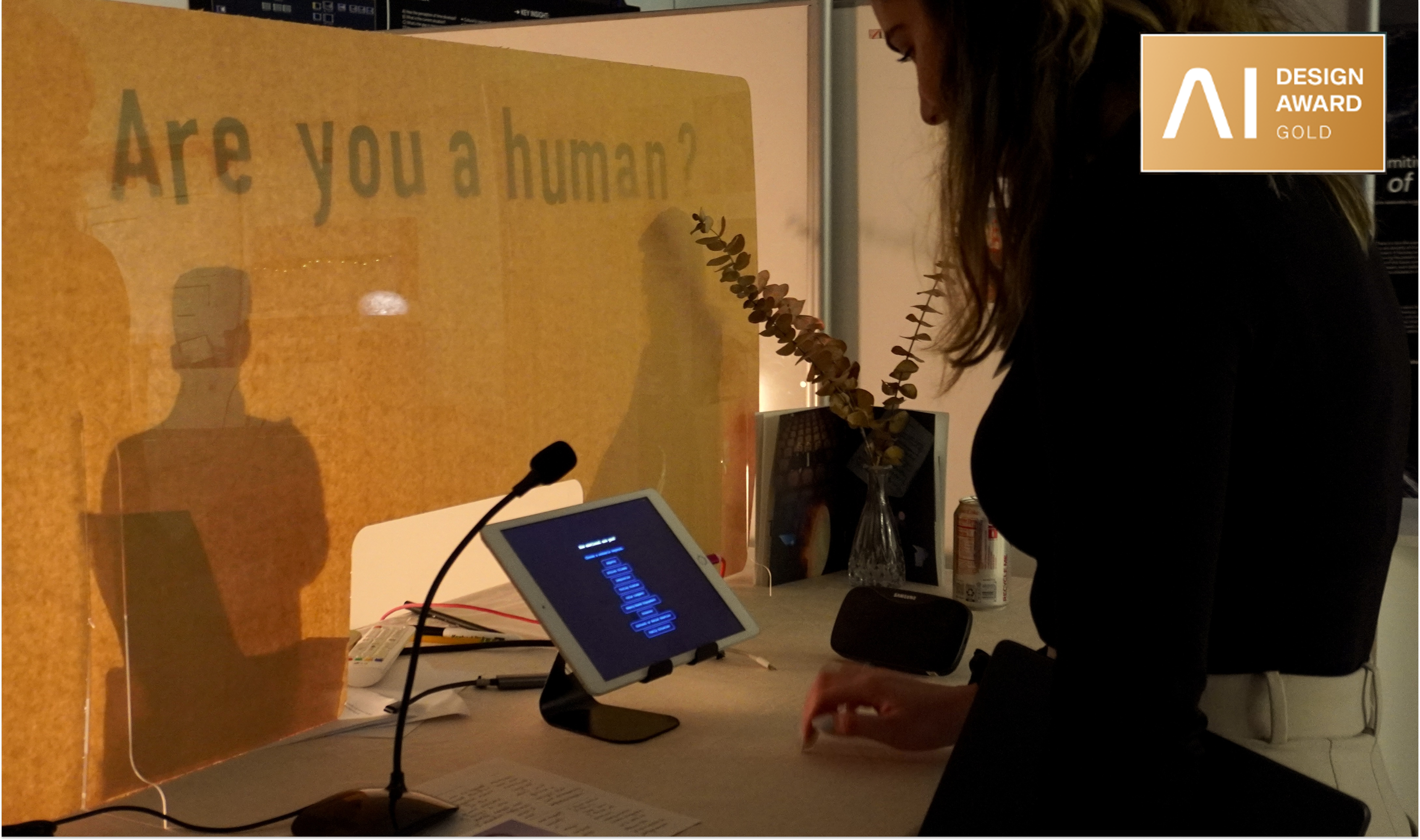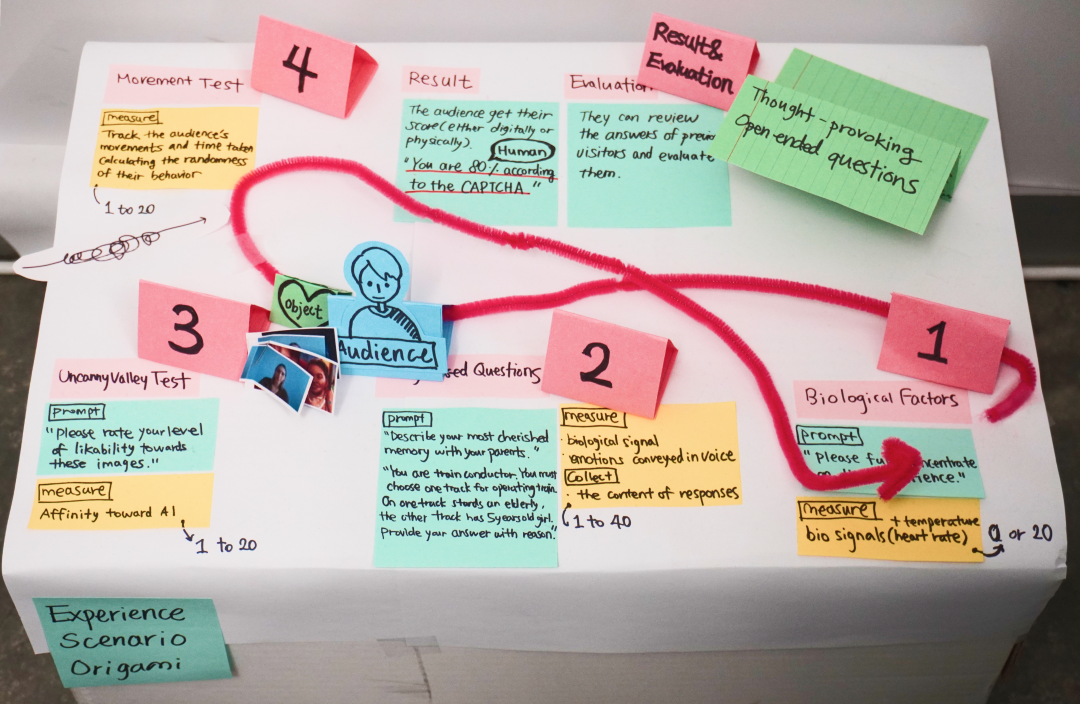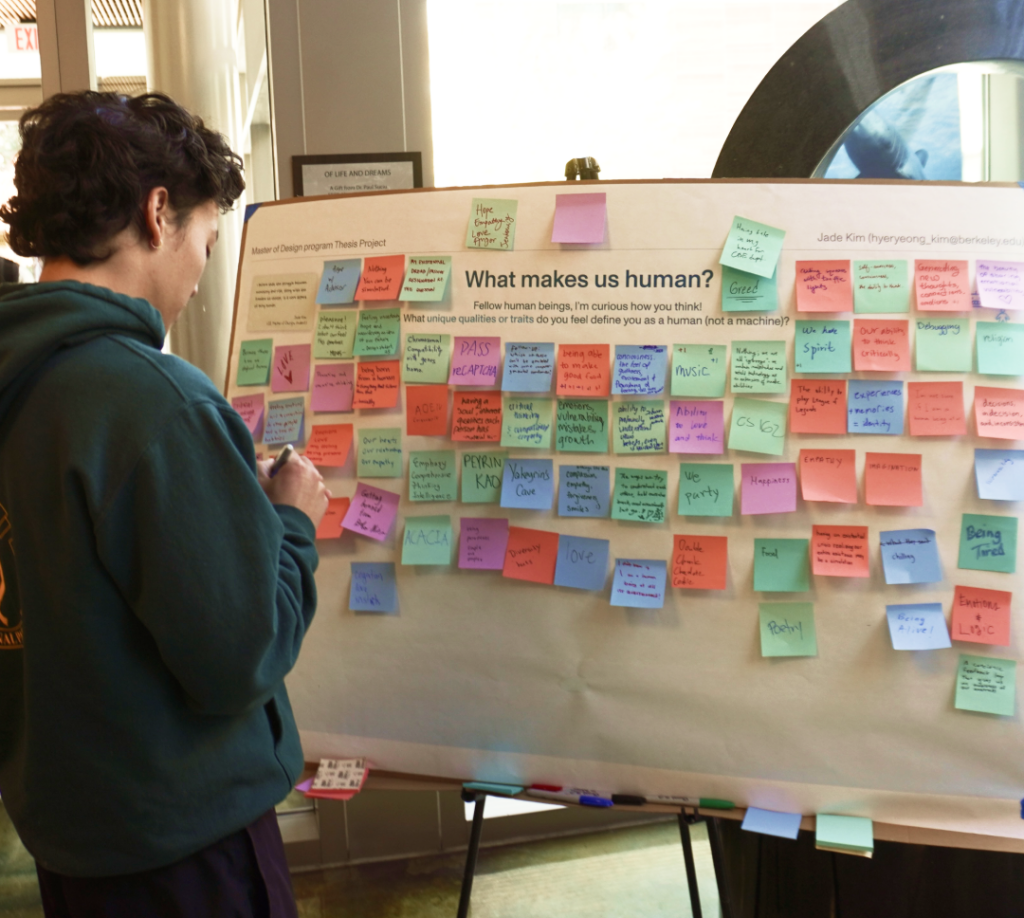Jade Hyeryeong Kim
MDes 2024
Future CAPTCHA: From fighting fraud to defining humanness
Introduction
In an era where artificial intelligence increasingly blurs the line between human and machine, this research explores the fundamental essence of what it means to be human. While beginning with practical challenges like telephone fraud and authentication systems, this work extends beyond to probe deeper philosophical questions about human nature, demonstrating how design methodologies can address not only wicked problems but also fundamental questions.
The outcomes of this research are an iterative experience of testing one’s own humanness. It reframes the Turing Test for the AI age, proposing a reverse approach: identifying human qualities on a spectrum rather than detecting machine efficiency through binary answers. It challenges the efficiency-driven paradigm of AI development, advocating for a design philosophy that prioritizes human authenticity. At the same time, the findings contribute to broader discussions about the human-machine distinction, questioning the rationale and necessity behind it, and whether traits like inefficiency and emotionality could one day emerge in machines.

Can we establish a set of a core characteristics or responses that are uniquely human in an increasingly AI-driven world?
To address this complex query, the work implemented a multi-faceted research strategy including diary studies, campus-wide surveys, and interviews. Through the research, this study identified several key characteristics that distinguish human nature from machines: Inefficiency as a source of naturalness, Emotional complexity and survival, Memory and temporal experience, Embodiment and physical presence, and Unpredictability and soul.
Final Design & Discussion

Drawing from these insights, the final interactive experience that evaluates human traits was designed. This work is intended for exhibition settings, inviting participants to engage in an experience that reimagines the Turing Test. The test challenges participants to consider their humanity by assessing their responses to various scenarios designed to highlight inefficiency, emotional complexity, memory, embodiment, and unpredictability. For instance, participants might reflect on deeply personal memories or respond to unpredictable prompts that reveal emotional vulnerability. The goal is to create a thought-provoking experience rather than a definitive measurement.
As the experience is developed, new questions arose:
(1) Can machines evaluate humanity? While the test leverages AI, its reliance on machines to measure human traits raises ethical and philosophical concerns.
(2) Why do we need to identify “real” humans? What purpose does this distinction serve? Is it rooted in love for our species, fear of losing identity, or a quest for control? Maybe our desire to separate humans from machines reflects the privilege of being human and perhaps even a fear of machines. Should we really fear machines? Machines themselves have yet to commit inherently “evil” acts. Humans, however, have. AI safety, after all, stems from fears of human misuse rather than AI autonomy. Perhaps the discomfort with machines becoming more human-like is an internal reflection of what we have done.
(3) Where do we draw the line? If naturalness defines humanity, how do we reconcile advancements like artificial organs or test-tube babies? Are these “unnatural”?
These questions highlight the complexity of human-machine relationships, pushing us to examine our biases, fears, and aspirations. This work is not about achieving an accurate measurement of humanity. Instead, it serves as a medium for reflection and dialogue, encouraging participants to redefine their understanding of what it means to be human.

Full listing


